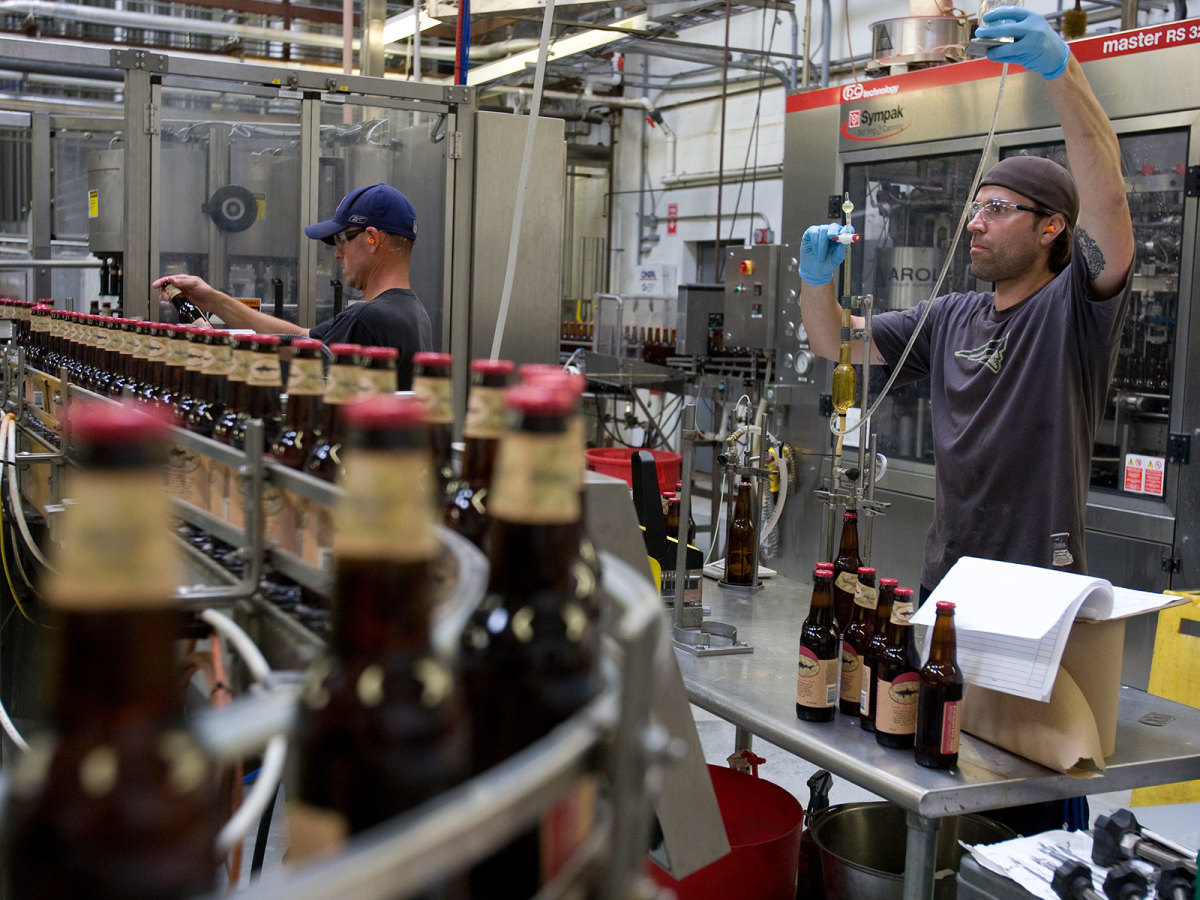How One Beer Is Angling Itself Toward Drinkers With Active Lifestyles

After a long day’s work, the first thing you might want to do is sit back, relax, and crack open a cold beer. Athletes aren’t very different from the rest of us. When the Astros won the World Series on Wednesday, photos from their locker room at Dodger Stadium showed them partying with champagne and Budweiser—pitcher James Hoyt and catcher Max Stassi even used the Commissioner’s Trophy as a beer luge. But is subbing out that recovery shake for a cold one such a good idea?
First brewed in early 2016, a beer called SeaQuench Ale seems to be blurring the lines between sports drink and alcoholic beverage. The beer’s maker, Dogfish Head Craft Brewery, is careful to make no health- or performance-related claims for its product, but does market the beer as an “active lifestyle” drink. And what lifestyle is more active than being an athlete?
The idea behind SeaQuench, says Sam Calagione, founder of the Milton (Del.) based brewery, was “to brew the most objectively thirst-quenching beer Dogfish Head has ever brewed.” The result is a mash up between three German beer styles—Kölsch, Berliner Weisse, and Gose—plus black lime and sea salt.
The beer is surprisingly salty. It has about 10 times the amount of sodium as rival active-lifestyle brand Michelob Ultra (100 milligrams per 12 ounces, compared to 11), and its average mineral content, which includes other electrolytes like potassium, is about three times that of Michelob Ultra, and twice as much as Gatorade. That might turn off some connoisseurs, but the added electrolytes are less for taste and more for their physiological effect.
Dallas Cowboys Dak Prescott's Pregame Meal Is An Unusual Combination
“When you drink anything that has sodium in it,” say Amy Goodson, a registered dietitian who has worked with TCU, the Cowboys, and the Rangers, “sodium helps your body retain water.”
Sports scientists would generally discourage drinking alcoholic beverages because alcohol triggers mechanisms that can lead to dehydration. A position statement by the National Athletic Trainers’ Association published in the Journal of Athletic Training in September advises that “Drinks with increasing alcohol content (greater than 4%) facilitate excessive diuresis and should be discouraged for fluid replacement.”
SeaQuench Ale has an alcohol content of 4.9%, a little way on the wrong side of the NATA advice. When designing this brew, Calagione reached out to exercise physiologist Bob Murray of Sports Science Insights for help with this detail. Murray knows a little bit about sports drinks—he founded the Gatorade Exercise Physiology Laboratory, now the Gatorade Sports Science Institute, in 1985, and served as its director until 2008.
Murray came up with a prescription for what the electrolyte content of SeaQuench should be. “There will be a slight diuretic effect of the alcohol,” he says, “but it can be countered by the presence of the extra minerals.” The exact details of the recipe—wheat for its dry character, sea salt for its crispness, and black lime for its refreshing quality—were up to Calagione.

None of this is to say that beer is a good replacement for a sports drink during activity. There is another good reason why drinking and competing might be a bad idea: while alcohol increases dopamine levels in the brain, making you feel better, it also suppresses other neurotransmitters, slowing down thought, speech, and movement. But perhaps on simple hydration considerations electrolyte-heavy beers might be OK during rest periods between workouts.
Immediately after training, though, you may want to still go for that recovery drink first. After intense exercise, quickly replenishing the energy stores you’ve burned up is crucial so that you will be ready to go next time. Although SeaQuench Ale is a light beer, it still has almost twice as many Calories as Gatorade (140 per 12 ounces, compared to 80), but most of the Calories in SeaQuench come from alcohol. During high intensity exercise, muscles predominantly use carbohydrates, stored by the body as glycogen, for fuel. Alcohol drunk post-exercise is converted to fat. “Only carbohydrate can replenish glycogen,” Goodson says. “If you actually want to replenish carbohydrate, you have to eat carbohydrate.”
When training for competition, says pro cyclist Alison Tetrick, athletes need to ensure that “the calories you’re putting in are all benefiting your goal.”
Diners and Dive Plays: Oklahoma's AD Has a Crucial Breakfast Tradition Before Every Road Game
Tetrick has a host of road racing wins to her name, and recently has been trying her hand at gravel cycling. This summer she won the Dirty Kanza 200 in Kansas, Gravel Worlds in Nebraska, and Rebecca Rusch’s Queen’s Stage Race in Idaho.
“I think alcohol can be considered an empty source of energy, she says. “[I] want to make sure what I’m putting in my body is ultimately making me stronger and better the next day.”
But Tetrick also goes by the mantra “everything in moderation, including moderation.” That might mean a glass of wine with dinner, or a margarita with friends after a long ride. Or the occasional beer with her active lifestyle.
“You do need to make sacrifices to reach peak performance,” Tetrick says, “but you also need to find a life balance where you’re a happy athlete. Happy athletes go faster.”
